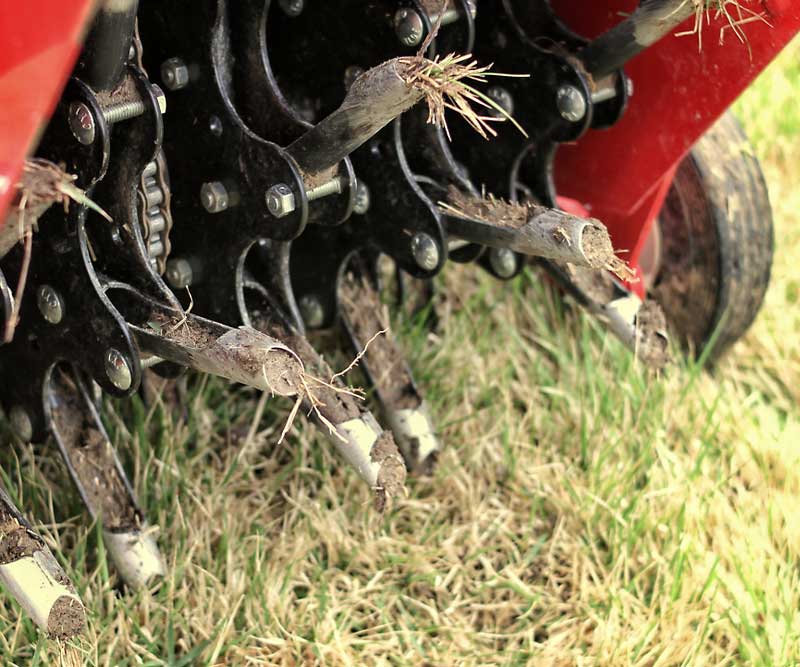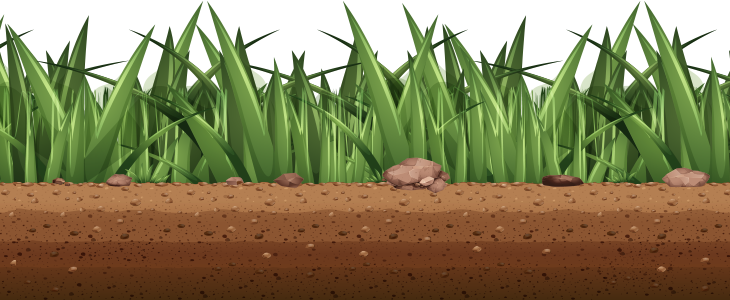
Newsletter
Looking for special deals from Budget Cuts and more lawn care tips? Join our mailing list!

Lawn Aeration Tips
Aeration is the process of making small holes in the soil to allow air, water, and other nutrients to reach into the soil and grass roots. This can alleviate compacted soil and it gives the grass roots more room to grow and breathe. Aeration helps your lawn to stay healthy and adds a nice boost for the growing season.
While we recommend aerating your lawn once a year, some lawns will benefit more than others. For example, every lawn will benefit from a yearly aeration (typically in the fall), yet if the lawn is heavily used, has excessive thatch, or is heavily compacted, aeration both in the fall and spring seasons may bring much added advantage. This focus of attention to aerate will help to nurture and repair many lawn issues. Of course, proper aeration is not the only effort to keep your lawn healthy. Other things like the type of grass, soil conditions and the amount of sunlight and shade your lawn gets will all be factors.
Many homeowners consider the "do-it-yourself" strategy, and this can work well. On the contrary, if one proceeds with DIY lawn aeration, there are many things one must know to have success. Aeration done incorrectly, or at the wrong time in the wrong conditions can cause severe damage to your lawn. Therefore, following are some keys tips to keep in mind.
Tips For Aerating Your Lawn:
- Aerate at the proper time. Everyone has an opinion fall only, spring only or both. Really, you can aerate any time during the growing seasons. Just be sure that the lawn is properly prepared and ready otherwise.
- Mow the grass shorter to a proper height. Be sure you cut yard lawn shorter than normal or close to get good penetration.
- Water the soil well. Ground moisture is key. It is important though not to aerate on hard dry soil. Your soil should be moist. If you have a sprinkler system on your lawn, turn it on the night before and run it heavy.
- Select the proper equipment. Look for an aeration machine that removes soil plug approximately two to three inches deep, and one-half to three-fourth inches wide for good results.
- Address soil plugs. Should you pick up my plugs after aeration? The overwhelming majority leave their plugs to break down and return to the soil over time. Bermuda grass though is more sensitive to these plugs. If not removed, they can leave yellow spots on your lawn, and if ran over by a mower, they can flatten out and become a real mess to clean up. If it is possible, invest in a lawn sweeper which comes in various sizes. The smaller ones you can push and the larger ones you can attach to the back of your mower. Therefore, if not removed, you can either leave the plugs "as is" and let them break down naturally, or you can break them up with your next grass cut or with the back of a rake, or similar.
- Resume regular lawn maintenance. After aeration, many consider overseeding. Overseeding is the planting of grass seed to fill in bare areas in your lawn and to help thicken and strengthen the existing grass. Adding extra grass seed can also help choke out unwanted weeds and improves overall appearance.
While it is possible to aerate your lawn and overseed yourself, there is no question that your yard will benefit from professional care. At Budget Cuts, we know what your lawn needs, and we have the proper skill sets, knowledge, and equipment to get the job done.
Considering a professional aeration or overseeding service? Contact Budget Cuts for a free estimate!
